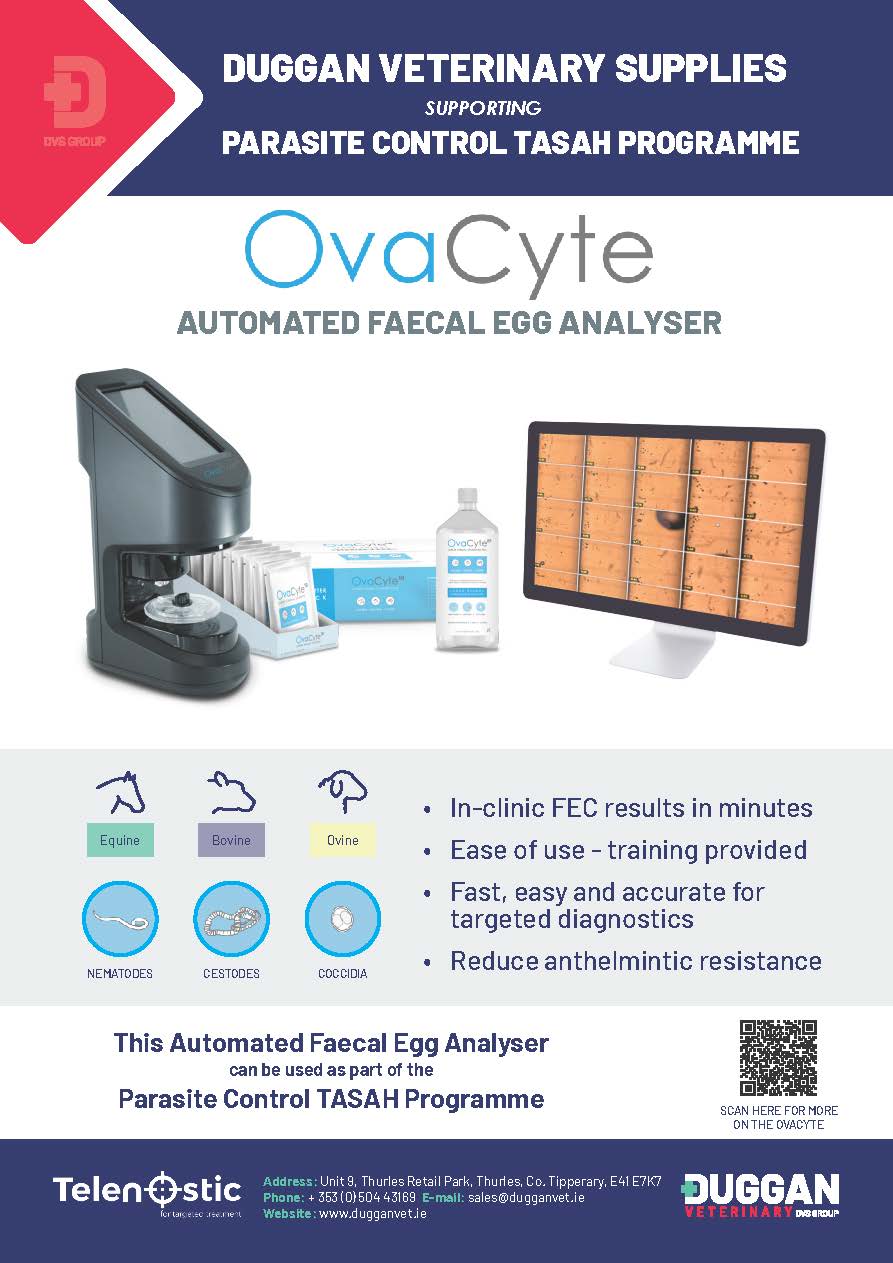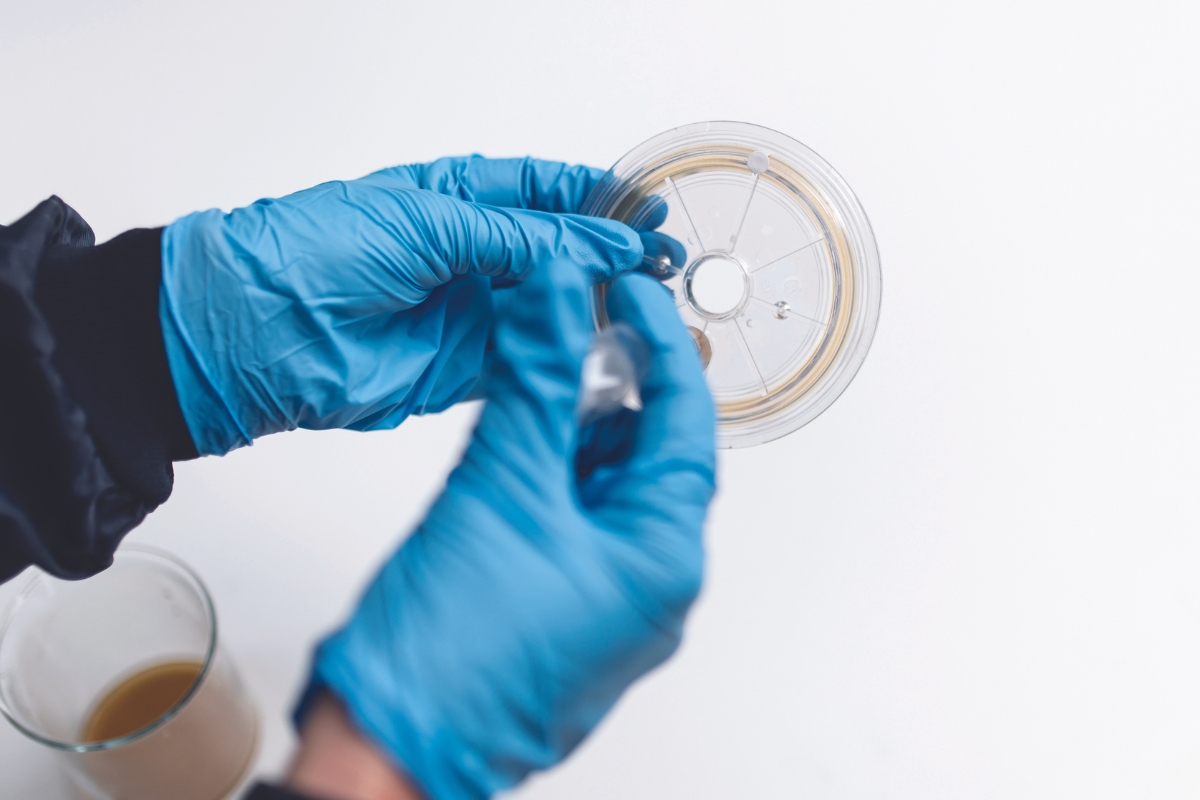The use of regular, and often in-discriminate, anthelmintics (AH) over the past few decades has resulted in compromised efficacy of most, if not all, deworming products available (Kaplan & Vidyashankar, 2012).
Traditional approaches to parasite control across all species, including horses, are now recognised as unsustainable and the development of new strategies is paramount in the face of increasing resistance (Morgan et al, 2022; Peregrine et al, 2014). The role of refugia, a concept where parasites within a population are not exposed to an anthelmintic thus reducing drug-resistance selection pressure, is a key concept in reducing anthelmintic resistance.

Duggan Veterinary Supplies Launch New Automatic Faecal Egg Analyser
Nearly 100 years ago Dr Norman Stoll investigated the method of counting hookworm eggs in faeces (Stoll, 1923). Since then, faecal egg counting has remained an essential tool both in clinical practice and parasitology research with several techniques introduced and validated.
Observations of our horse populations show that in adult horses exposed to low to moderate levels of pasture contamination the 80:20 rule applies: 80% of the parasite eggs come from 20% of the animals (Lester et al, 2013).
The use of faecal egg counts (FEC) to assess levels of strongyle egg shedding (coupled with serum or saliva antibody testing for tapeworm in horses) allows individual assessment for the need of anthelmintic treatment (Morgan et al, 2022; Rendle et al, 2019). Pooled faecal samples in cattle and sheep have been shown to be reliable for assessing GIN (gastrointestinal nematode infection) FEC taking into account the level of FEC, the pool size and the analytical sensitivity of the method (Rinaldi et al, 2019).
One single FEC is not representative of an individual’s worm burden, however regular FECs are invaluable in assessing whether treatment with AH is indicated and recognising high shedders within a population.
Test methods and options available to veterinarians
Veterinarians have the choice of either sending the samples to a reference laboratory or performing the test in-house. Both options use manual microscopy based methods for identifying and counting the eggs of which the McMaster is the most common. Recently automated systems utilising Artificial Intelligence have entered the market.
The OvaCyteTM system developed by Irish veterinary technology company Telenostic Ltd in conjunction with University College Dublin and ICHEC (Irish Centre for High End Computing) and distributed by Duggan Veterinary Supplies is an impressive point-of care solution now available to veterinarians in Ireland. It is an affordable small footprint analyser that would easily fit into a small laboratory in a veterinary clinic. It makes use of a 2-minute easy sample preparation method and then once filled, the cassette is placed onto the analyser.
The system is fully automated from this point on requiring no time from the operator. The analyser, which is essentially a scanning microscope with an inbuilt camera systematically images the channel in the cassette. These high-quality images are uploaded to the cloud based Artificial Intelligence algorithms which identify and count the ova and oocysts and send back a report in real time as the scan is proceeding.
The role of faecal egg reduction testing
Faecal egg reduction testing (FECRT) is recognised as a method for assessing in vivo efficacy of anthelmintics against parasitic nematodes (Denwood et al, 2010). Accuracy in FECRT is critical for interpretation and variability in FEC data can lead to inconsistent FECRT (Denwood et al, 2010).
The advantages of a system such as OvaCyteTM is its high analytical sensitivity providing high precision results, the results are ready to read in minutes, the system is highly standardised leading to consistency of results and the time it saves relative to lab based testing or in-house manual McMaster counts. Systems such as this will hopefully remove the barriers of traditional FEC methods and lead to the increased utilisation of the very important strategy of targeted treatment implementation through evidence based FECs.
Denwood, M.J et al (2010) ‘Comparison of three alternative methods for analysis of equine Faecal Egg Count Reduction Test data’ Preventive Veterinary Medicine, 93, pp 316-323
Gordan, H & Whitlock, H.V ‘A new technique for counting nematode eggs in sheep faeces’ Journal of the Council for Scientific and Industrial Research, 12(1), PP 50-53
Kaplan, R & Vidyashankar, A.N (2012) ‘An inconvenient truth: global warming and anthelmintic resistance’ Veterinary Parasitology, 4;186(1-2);70-8
Lester, HE et al (2014) Faecal worm egg count analysis for targeting anthelmintic treatment in horses: points to consider’ Equine Veterinary Journal, 46(20, pp139-45
Morgan, E.R et al (2022) ‘Confounding factors affecting faecal egg count reduction as a measure of anthelmintic efficacy’ Parasite, 29, 20.
Peregrine, A.S et al (2014) ‘Anthelmintic resistance in important parasites of horses: does it really matter?’ Veterinary Parasitology, 201(1-2);1-8
Stoll, N.R (1923) ‘Investigation on the control of hookworm disease . XV. An effective method of counting hookworm eggs in feces’ American Journal of Epidemiology, 3(1), pp59-70
Rinaldi, L et al (2019) ‘Rapid assessment of faecal egg count and faecal egg count reduction through composite sampling in cattle’ Parasites & Vectors, 12:353



